GL&V Sweden AB has delivered a major Recycled Pulp Line for fluting and test liner in Ukraine. The customer is PJSC Kiev Cardboard and Paper Mill. The process re-cycles local and Russian OCC.
The capacity on this recycled fiber production line is 600 BDTPD. The delivery scope contains bale conveyer, pulping station, centrifugal cleaning, fractionation, fine screening, reverse cleaning, thickening and refining.
“Everyone who saw the production figures of the OCC process said that they had never seen anything like it.”
PJSC Kiev Cardboard and Paper Mill, located in Obukhiv city in Kiev region in Ukraine, chose GL&V Sweden AB as their technology partner to deliver a new OCC Pulping Line for their production plant.
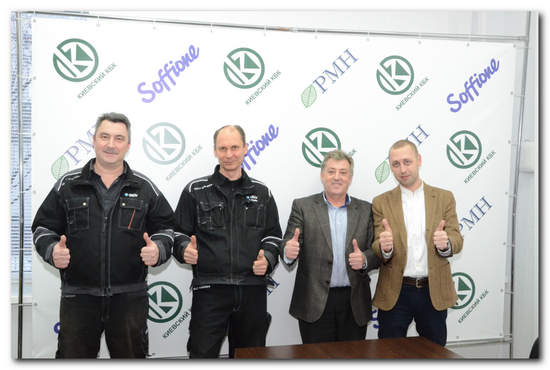
“When the OCC line was started up, the process ran just as it was supposed to”. – Peter Smirnov, Chief Engineer and Tero Jussila, Global Business Manager from GL&V (from left to right) and Alexander Yakovina, Director on Quality and Igor Oleshchuk, CTO, PJSC Kiev Cardboard and Paper Mill.
The new OCC pulping line was constructed for fluting and test liner from local and Russian OCC. The raw material dry content is 88%. Fiber production is min. 300 BDMTPD and max. 600 BDMTPD. The short fiber/long fiber split is SF 60–70% and LF 30–40%.
PJSC Kiev Cardboard and Paper Mill, part of the Austrian Pulp Mill Holding, is one of the biggest enterprises in Europe in cardboard and paper production. The mill accounts for about 30% of the total pulp and paper produced in Ukraine. The main raw material used for cardboard and paper production is recycled paper. The waste paper processing capacity is more than 1500 tons per day.
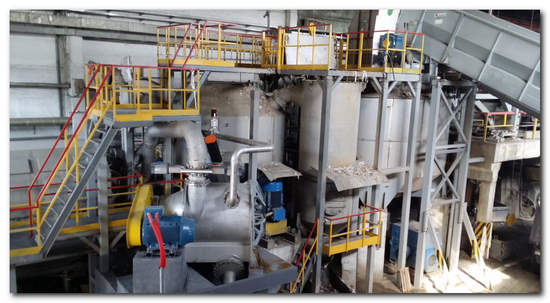
PJSC Kiev Cardboard and Paper Mill consists of three main production plants. The cardboard plant produces coated and uncoated cardboard and containerboard, including fluting for corrugated products with a total output of 240 000 tons per year. The tissue plant produces tissue materials used for mass-consumption, sanitary and hygiene products as well as finished goods such as toilet paper, napkins, and paper towels, with a total output of 70,000 tons per year. The corrugated packaging plant produces corrugated containers and packaging with a total output of 300 million square meters per year.
PJSC Kiev Cardboard and Paper Mill is currently implementing a challenging investment program. In December 2016, in an interview in Kiev, Igor Oleshchuk, CTO of the PJSC Kiev Cardboard and Paper Mill told GL&V’s representatives that the company has ongoing investment projects in three areas. The company needs to develop new fast-moving tissue products for the consumer markets. In late 2016, a new yankee cylinder was taken into use at PM1, and a new converting line for household products and modernization of tissue machine 2 (TM2) are under planning. Preparations are also under way to rebuild the refining of TM1, a project in which Igor Oleshchuk was hoping to start co-operation with GL&V’s experts.
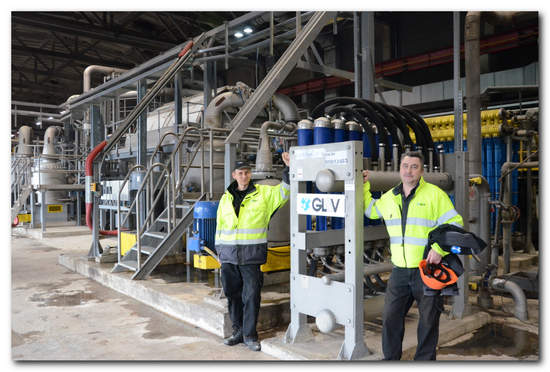
The customer statement: “We wanted to ensure the use of best available technology in terms of both operational and financial aspects and GL&V´s solution seemed very promising in that respect”. – GL&V´s team in Kiev was headed by Tero Jussila (left) and Peter Smirnov.
The New OCC Recycled Pulp Line
In the interview in Kiev in December 2016, Igor Oleshchuk made an open statement on GL&V’s contribution in the project.
“The main target of our investment project was to improve the quality of the pulp such that our cardboard products would be recognized in the markets for their high quality criteria,” says Igor Oleshchuk, CTO of the PJSC Kiev Cardboard and Paper Mill.
- In addition to increasing the capacity of the new OCC pulp line, another important target was to reduce fiber loss and energy consumption. These are essential issues in terms of our production economy.
- We wanted to scale up the production of the PM2. Initially we aimed to increase the capacity of the pulp line to 600 t/d, and to reduce the use of secondary fiber by 50 kg/t and electricity by 50 kW/t.
- We wanted to ensure the use of best available technology in terms of both operational and financial aspects, and GL&V’s solution seemed very promising in that respect.
- Naturally, we were aware that GL&V offered novelty technology, which wasn’t in wide use as a complete process at that time. But we were willing to take the risk and choose GL&V as our partner. We knew that GL&V is a reliable company with global operations.
- The early stages of the investment ran smoother than we have ever seen before. As the project proceeded, we naturally faced some problems, but GL&V’s experts constantly came up with solutions. We were extremely happy with GL&V’s determined attitude.
- Once we reached the line start-up phase, the cooperation between our own project team and GL&V proved exemplary. The entire team was simply excellent. We contributed a great deal of our knowledge to the project, but we realized that GL&V did too.
- The start-up of the new OCC pulp line went without any major glitches, which allowed us to focus on further improving our processes without any delays. This phase lasted a while, since we didn’t simply aim to increase capacity, but also to save energy and reduce fiber loss. We successfully reached the process settings that we had set as a target. I remember well the latest negotiations with the team personnel at both our mill and GL&V’s location in Tampere, Finland.
- When the OCC line was started up, the process ran just as it was supposed to. The production personnel were able to run the new line from the get-go so that the targeted capacity increase was exceeded by 20%. It was at that moment we could – at the latest – congratulate each other for a job well done. We faced a huge challenge and overcame it.
- We also achieved great figures in terms of energy savings, and we are very pleased about that. Everyone who saw the production figures of the OCC process said that they had never seen anything like it. The pulp line’s energy consumption was reduced by 25% compared to existing OCC lines.
- For us, it is very important to monitor the dirt and sticky content of the pulp in order to prevent the contamination of the board machine’s cylinders. We had been using chemicals to keep the web clean, but we don’t need them anymore as we no longer have problems with stickies.
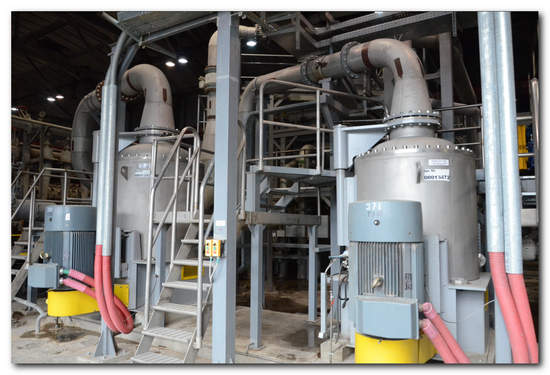
The Innovative Process High Lights
Pulping/HD-cleaning/Coarse Screening
The new patented Pulping and detrashing process, replaces conventional Pulping, HD-cleaning and coarse screening processes. Conventional systems require a lot of energy, beats up the contaminants into hard to remove fragments and suffer from heavy maintenance issues in the final stage coarse screening. GL&V´s patented process simplifies the process, eliminates problems in traditional processes and makes a very operator friendly solution since it even can be operated by one person.
Long Fiber Screening and Reverse Cleaning
The Long Fiber screening system is a three stage system, comprising a two-stage screen with both accepts sent forward to the LF disc filter thickener. Rejects from secondary stage is sent to a rejects chest from which it is pumped to a single stage tertiary screen. The tertiary accept is cascade coupled back to the feed tank of the primary screen.
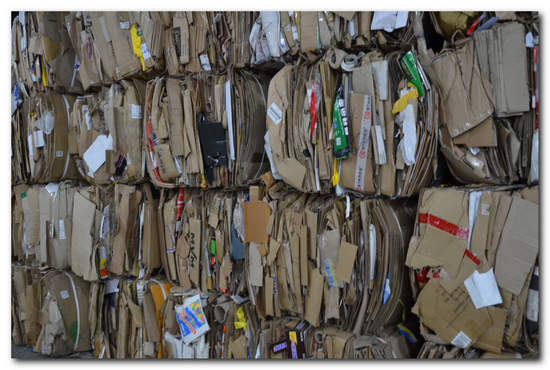
The Long Fiber screen accepts is further treated in Reverse Cleaners, to remove light weight contaminants. Traditionary Light reject cleaners require high pressure drop and are at least in the primary stage using high volumetric reject flows. The drawbacks with these systems are high energy consumption and large recovery stages.
GL&V uses a new patented system combining high efficiency with low reject flows and high accepts consistency thickening. The solution is a cleaner that initially draws a large portion of water with the light reject, to obtain a high accepts consistency; the water is separated from the light reject in a second separation before leaving the cleaner. The water is used as dilution in the stock preparation.
